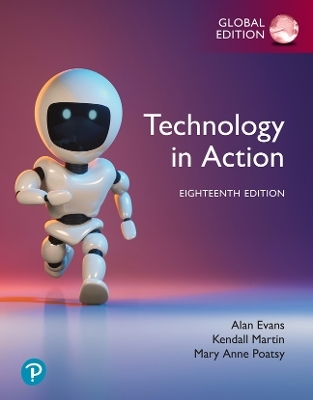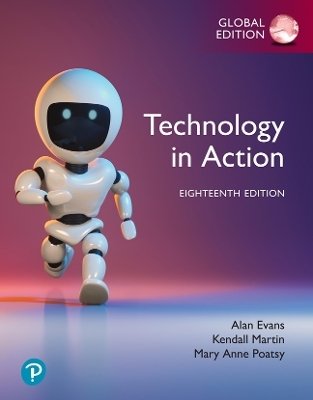
Fuzzy Logic with Engineering Applications 3e
Wiley-Blackwell (Hersteller)
978-1-119-99437-4 (ISBN)
- Keine Verlagsinformationen verfügbar
- Artikel merken
The first edition of Fuzzy Logic with Engineering Applications (1995) was the first classroom text for undergraduates in the field. Now updated for the second time, this new edition features the latest advances in the field including material on expansion of the MLFE method using genetic algorithms, cognitive mapping, fuzzy agent-based models and total uncertainty. Redundant or obsolete topics have been removed, resulting in a more concise yet inclusive text that will ensure the book retains its broad appeal at the forefront of the literature. Fuzzy Logic with Engineering Applications, 3rd Edition is oriented mainly towards methods and techniques. Every chapter has been revised, featuring new illustrations and examples throughout. Supporting MATLAB code is downloadable at www.wileyeurope.com/go/fuzzylogic. This will benefit student learning in all basic operations, the generation of membership functions, and the specialized applications in the latter chapters of the book, providing an invaluable tool for students as well as for self-study by practicing engineers.
Professor Timothy J. Ross is a registered professional engineer with over 30 years experience in the fields of computational mechanics, hazard survivability, structural dynamics, structural safety, stochastic processes, risk assessment, and fuzzy systems. He has been an engineering educator at the University of New Mexico (UNM) since 1987 and is the founding Editor-in-Chief of the International Journal of Intelligent and Fuzzy Systems.
About the Author xiii Preface to the Third Edition xv 1 Introduction 1 The Case for Imprecision 2 A Historical Perspective 3 The Utility of Fuzzy Systems 6 Limitations of Fuzzy Systems 8 The Illusion: Ignoring Uncertainty and Accuracy 10 Uncertainty and Information 13 The Unknown 14 Fuzzy Sets and Membership 14 Chance Versus Fuzziness 16 Sets as Points in Hypercubes 18 Summary 20 References 20 Problems 21 2 Classical Sets and Fuzzy Sets 25 Classical Sets 26 Operations on Classical Sets 28 Properties of Classical (Crisp) Sets 29 Mapping of Classical Sets to Functions 32 Fuzzy Sets 34 Fuzzy Set Operations 35 Properties of Fuzzy Sets 37 Alternative Fuzzy Set Operations 40 Summary 41 References 42 Problems 42 3 Classical Relations and Fuzzy Relations 48 Cartesian Product 49 Crisp Relations 49 Cardinality of Crisp Relations 51 Operations on Crisp Relations 52 Properties of Crisp Relations 52 Composition 53 Fuzzy Relations 54 Cardinality of Fuzzy Relations 55 Operations on Fuzzy Relations 55 Properties of Fuzzy Relations 55 Fuzzy Cartesian Product and Composition 55 Tolerance and Equivalence Relations 62 Crisp Equivalence Relation 63 Crisp Tolerance Relation 64 Fuzzy Tolerance and Equivalence Relations 65 Value Assignments 68 Cosine Amplitude 69 Max Min Method 71 Other Similarity Methods 71 Other Forms of the Composition Operation 72 Summary 72 References 73 Problems 73 4 Properties of Membership Functions, Fuzzification, and Defuzzification 89 Features of the Membership Function 90 Various Forms 92 Fuzzification 93 Defuzzification to Crisp Sets 95 -Cuts for Fuzzy Relations 97 Defuzzification to Scalars 98 Summary 110 References 111 Problems 112 5 Logic and Fuzzy Systems 117 Part I Logic 117 Classical Logic 118 Proof 124 Fuzzy Logic 131 Approximate Reasoning 134 Other Forms of the Implication Operation 138 Part II Fuzzy Systems 139 Natural Language 140 Linguistic Hedges 142 Fuzzy (Rule-Based) Systems 145 Graphical Techniques of Inference 148 Summary 159 References 161 Problems 162 6 Development of Membership Functions 174 Membership Value Assignments 175 Intuition 175 Inference 176 Rank Ordering 178 Neural Networks 179 Genetic Algorithms 189 Inductive Reasoning 199 Summary 206 References 206 Problems 207 7 Automated Methods for Fuzzy Systems 211 Definitions 212 Batch Least Squares Algorithm 215 Recursive Least Squares Algorithm 219 Gradient Method 222 Clustering Method 227 Learning From Examples 229 Modified Learning From Examples 233 Summary 242 References 242 Problems 243 8 Fuzzy Systems Simulation 245 Fuzzy Relational Equations 250 Nonlinear Simulation Using Fuzzy Systems 251 Fuzzy Associative Memories (FAMS) 255 Summary 264 References 265 Problems 266 9 Decision Making with Fuzzy Information 276 Fuzzy Synthetic Evaluation 278 Fuzzy Ordering 280 Nontransitive Ranking 283 Preference and Consensus 285 Multiobjective Decision Making 289 Fuzzy Bayesian Decision Method 294 Decision Making Under Fuzzy States and Fuzzy Actions 304 Summary 317 References 318 Problems 319 10 Fuzzy Classification 332 Classification by Equivalence Relations 333 Crisp Relations 333 Fuzzy Relations 335 Cluster Analysis 339 Cluster Validity 340 c-Means Clustering 340 Hard c-Means (HCM) 341 Fuzzy c-Means (FCM) 349 Fuzzy c-Means Algorithm 352 Classification Metric 357 Hardening the Fuzzy c-Partition 360 Similarity Relations from Clustering 361 Summary 362 References 362 Problems 363 11 Fuzzy Pattern Recognition 369 Feature Analysis 370 Partitions of the Feature Space 371 Single-Sample Identification 371 Multifeature Pattern Recognition 378 Image Processing 390 Summary 398 References 399 Problems 400 12 Fuzzy Arithmetic and the Extension Principle 408 Extension Principle 408 Crisp Functions, Mapping, and Relations 409 Functions of Fuzzy Sets Extension Principle 411 Fuzzy Transform (Mapping) 411 Practical Considerations 413 Fuzzy Arithmetic 418 Interval Analysis in Arithmetic 420 Approximate Methods of Extension 422 Vertex Method 423 DSW Algorithm 426 Restricted DSW Algorithm 428 Comparisons 429 Summary 432 References 433 Problems 433 13 Fuzzy Control Systems 437 Control System Design Problem 439 Control (Decision) Surface 440 Assumptions in a Fuzzy Control System Design 441 Simple Fuzzy Logic Controllers 441 Examples of Fuzzy Control System Design 442 Aircraft Landing Control Problem 446 Fuzzy Engineering Process Control 453 Classical Feedback Control 453 Fuzzy Control 457 Fuzzy Statistical Process Control 464 Measurement Data Traditional SPC 466 Attribute Data Traditional SPC 472 Industrial Applications 478 Summary 479 References 482 Problems 484 14 Miscellaneous Topics 501 Fuzzy Optimization 501 One-Dimensional Optimization 502 Fuzzy Cognitive Mapping 508 Concept Variables and Causal Relations 508 Fuzzy Cognitive Maps 510 Agent-Based Models 520 Summary 524 References 525 Problems 526 15 Monotone Measures: Belief, Plausibility, Probability, and Possibility 530 Monotone Measures 531 Belief and Plausibility 532 Evidence Theory 537 Probability Measures 540 Possibility and Necessity Measures 542 Possibility Distributions as Fuzzy Sets 549 Possibility Distributions Derived from Empirical Intervals 551 Deriving Possibility Distributions from Overlapping Intervals 552 Redistributing Weight from Nonconsonant to Consonant Intervals 554 Comparison of Possibility Theory and Probability Theory 568 Summary 569 References 571 Problems 572 Index 579
| Erscheint lt. Verlag | 27.12.2010 |
|---|---|
| Verlagsort | Hoboken |
| Sprache | englisch |
| Maße | 175 x 246 mm |
| Gewicht | 1015 g |
| Themenwelt | Mathematik / Informatik ► Informatik |
| Technik ► Elektrotechnik / Energietechnik | |
| Technik ► Maschinenbau | |
| ISBN-10 | 1-119-99437-3 / 1119994373 |
| ISBN-13 | 978-1-119-99437-4 / 9781119994374 |
| Zustand | Neuware |
| Haben Sie eine Frage zum Produkt? |
aus dem Bereich


